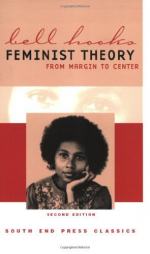
|
| Name: _________________________ | Period: ___________________ |
This quiz consists of 5 multiple choice and 5 short answer questions through Chapters 2 and 3.
Multiple Choice Questions
1. What potential effect can feminism have on the family, in the author's view?
(a) It can transform the family in very positive ways.
(b) It can help maintain the traditional structure of the Western family.
(c) It can draw attention away from the family towards more important things.
(d) It can undermine family stability.
2. In the Preface to the second edition (2000), how does the author describe the original reception of her book?
(a) It was rejected by mainstream feminists.
(b) Women of color claimed it focused mostly on white women so they rejected it.
(c) It started a riot.
(d) It was embraced by all feminists for its thought-provoking content.
3. Were there ever alternate reactions to black women's efforts to participate in the early feminist movement, and if so what were they?
(a) Some white feminists rejected their ideas but most did not.
(b) Sometimes their ideas inspired new understanding and growth in the movement.
(c) Black women were always seen as a threat to the movement.
(d) Black feminists' ideas about class were accepted, but not their ideas about race.
4. From which position (or perspective) does the author claim to write in her analysis of feminism and its social manifestations?
(a) From the margins.
(b) From a religious perspective.
(c) From a foreign perspective.
(d) From an elite position.
5. In Chapter 1, the author states that feminist theory and the feminist movement were originally shaped by which type of people?
(a) Expatriates living abroad.
(b) Middle-class women.
(c) Working-class women.
(d) Middle-class white women.
Short Answer Questions
1. For the author, what perspective really changed the direction of feminist thought?
2. The author opens the Preface to the first edition of the book with a description of which group and its experiences in life?
3. Who has portrayed the relationship between feminism and the family in this way? (See question # 61)
4. In the Preface to the first edition (1984), which two key terms in her analysis does the author introduce?
5. What is the social and racial dynamic described by the author at the beginning of the Preface to the first edition of the book?
|
This section contains 463 words (approx. 2 pages at 300 words per page) |

|




